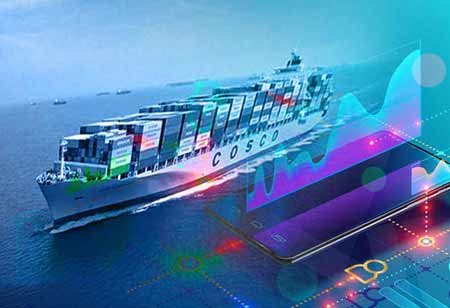THANK YOU FOR SUBSCRIBING
THANK YOU FOR SUBSCRIBING

By
Logistics Transportation Review | Thursday, October 06, 2022
Stay ahead of the industry with exclusive feature stories on the top companies, expert insights and the latest news delivered straight to your inbox. Subscribe today.
There will be an enhanced recipient service at a lower cost-to-service in the future of the transport sector through resilient & sustainable management.
FREMONT, CA: A major cost component of supply chains is transportation. Companies' profits are also affected by rising freight costs. Retailers have absorbed most of these price increases, but consumers feel the pinch. Supply chain crises are not new, but tighter delivery windows, convenient fulfillment options, and emails regarding shipment delays make transportation planning complex. The complexity of planning grows when you factor in multiple third-party providers. The flow of information is as important as the flow of goods in transportation planning. A capacity-constrained market and limited visibility into other retail areas, including merchandising and inventory, could negatively affect customer experience.
Retailers are not making the most of IoT-connected vehicles, whether factory-fitted or aftermarket. Data can play a huge role in refining transport plans by reflecting real-world experiences.
It is possible to maximize the use of vehicles and drivers through fleets and operating sites. Forecasts are critical for increasing accuracy and refreshing plans when new data is available. Real-world constraints can be understood using IoT, GPS tracking, and edge computing.
It is common for planners to use manual workarounds long after constraints have expired, resulting in a plan that is overly restricted. A GPS signal allows the real world to be mirrored with actual transport routes and speeds, which allows time, day, and direction to be reflected in speed limits.
Multi-tier supply chains often span more than one day. An intelligent freight prioritization algorithm considers factors such as shipping shelf life, availability/inventory of SKUs on the pallet, etc. When using the prioritized transport plan, warehouse management systems ensure that the most urgent freight is unloaded first. Planners' experience limits the operational response to disruptions. Optimizing loads, modifying trips, and adjusting driver allocation within a day, allows planners to maintain a cost-effective trade-off between cost and proposition.
Transport planning must accommodate and optimize electric and green vehicles, mainly smaller goods vehicles. New constraints include charging points and recharge efficiency; recharge activity can coincide with regulated driver rest periods.
Data-driven orchestration and a real-world transport plan unlock further opportunities, like partnerships, contractual agreements to decrease empty miles and integration with other product groups.
Fleet operators can leverage data to improve service reliability, reduce costs, and minimize environmental impact. Technology investments and process improvements are required. Real-world constraints will be reflected in the transport plan using data, route optimization, AI algorithms, and planners' experience.
I agree We use cookies on this website to enhance your user experience. By clicking any link on this page you are giving your consent for us to set cookies. More info





